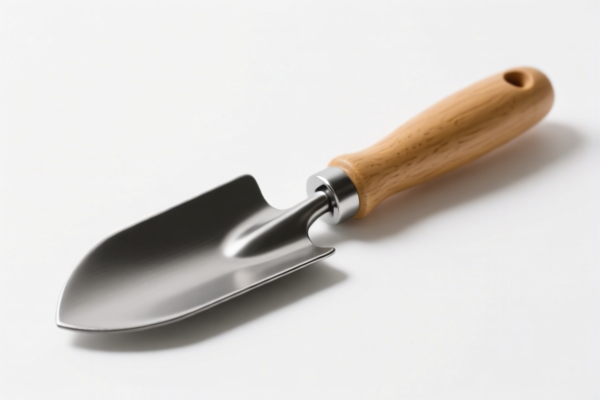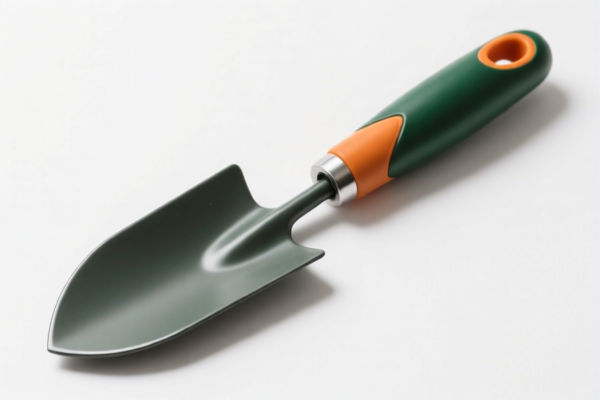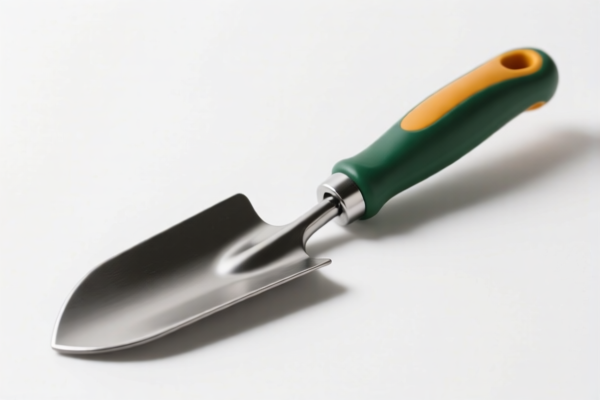| HS Code | Official Doc | Tariff Rate | Origin | Destination | Effective Date |
|---|---|---|---|---|---|
| 8201906000 | Doc | 55.0% | CN | US | 2025-05-12 |
| 8201904000 | Doc | 55.0% | CN | US | 2025-05-12 |
| 8205517500 | Doc | 58.7% | CN | US | 2025-05-12 |
| 8206000000 | Doc | The rate of duty applicable to that article in the set subject t+30.0% | CN | US | 2025-05-12 |
| 9603100500 | Doc | 38.0% | CN | US | 2025-05-12 |
| 9603904000 | Doc | 37.5% | CN | US | 2025-05-12 |




Gardening Tool
A gardening tool is any of many tools used to cultivate, maintain, and harvest gardens and landscapes. These tools facilitate a variety of tasks, from preparing soil to planting seeds and caring for established plants.
Materials
Gardening tools are commonly constructed from the following materials:
- Steel: High-carbon steel is frequently used for blades and digging parts due to its strength and durability. Stainless steel offers corrosion resistance.
- Wood: Traditionally used for handles, providing a comfortable grip. Hardwoods like ash, hickory, and maple are common.
- Plastic/Polymer: Often used for handles, lightweight components, and some tool bodies. Offers resistance to moisture and decay.
- Aluminum: Lightweight and rust-resistant, used for tool bodies and some handles.
- Fiberglass: Used for handles, offering strength and weather resistance.
Purpose & Function
The primary purpose of gardening tools is to make gardening tasks more efficient and less physically demanding. Functions include:
- Soil Preparation: Loosening, turning, and aerating soil.
- Planting: Creating holes for seeds and seedlings, transplanting plants.
- Weeding: Removing unwanted vegetation.
- Cultivating: Stirring and loosening soil around plants.
- Pruning: Removing dead or overgrown plant material.
- Watering: Delivering water to plants.
- Harvesting: Collecting fruits, vegetables, and flowers.
Usage Scenarios
Gardening tools are used in a wide range of settings:
- Home Gardens: Small-scale vegetable, flower, and herb gardens.
- Landscaping: Maintaining lawns, shrubs, and trees.
- Commercial Agriculture: Large-scale farming and horticulture.
- Greenhouses & Nurseries: Planting and caring for plants in controlled environments.
- Public Parks & Botanical Gardens: Maintaining public landscapes.
Common Types
Gardening tools can be broadly categorized based on their function:
- Digging Tools:
- Shovel: For moving large amounts of soil, compost, and other materials. Pointed shovels are for digging, while square shovels are for moving materials.
- Spade: For edging, lifting sod, and dividing plants. Features a flat blade.
- Fork: For turning soil, aerating, and lifting plants.
- Trowel: For planting seedlings and small plants.
- Dibber: For making holes for seeds.
- Cultivating Tools:
- Hand Rake: For smoothing soil and removing debris.
- Garden Hoe: For weeding and cultivating soil. Various blade shapes exist for different tasks.
- Cultivator: For loosening and aerating soil between rows of plants.
- Pruning Tools:
- Pruning Shears (Secateurs): For cutting small branches and stems.
- Loppers: For cutting larger branches.
- Pruning Saw: For cutting thick branches.
- Hedge Shears: For trimming hedges and shrubs.
- Watering Tools:
- Watering Can: For manually delivering water to plants.
- Hose: For delivering water from a tap.
- Sprinkler: For automatically watering lawns and gardens.
- Other Tools:
- Wheelbarrow: For transporting materials.
- Garden Gloves: For protecting hands.
- Hand Pruner: For harvesting and light pruning.
- Soil Knife (Hori-Hori): Versatile tool for weeding, transplanting, and dividing plants.
The declared goods are identified as GARDENINGTOOL. Based on this description, the following HS codes are relevant:
-
8201906000: This HS code falls under Chapter 82, which covers “Tools, including those for use in agriculture, horticulture or forestry.” Specifically, it covers “Other handtools of a kind used in agriculture, horticulture or forestry, and parts thereof: Other.” This would encompass a variety of gardening hand tools not specifically listed elsewhere. The applicable tax rate details are: Basic duty: 0.0%, Additional duty: 25.0%, and after April 2, 2025, the additional duty increases to 30.0%, resulting in a total tax rate of 55.0%.
-
8201904000: Also within Chapter 82, this HS code covers “Other handtools of a kind used in agriculture, horticulture or forestry, and parts thereof: Forks, and parts thereof.” If the gardening tool is a fork, this is the appropriate classification. The applicable tax rate details are: Basic duty: 0.0%, Additional duty: 25.0%, and after April 2, 2025, the additional duty increases to 30.0%, resulting in a total tax rate of 55.0%.
It is important to note that the applicable tax rate for both HS codes will change after April 2, 2025, with the additional duty increasing from 25.0% to 30.0%.
Customer Reviews
I appreciate the detailed explanation of the 9603100500 HS code. The 38% tariff rate and the material breakdown were exactly what I needed for my import project.
The page has good info on HS codes, but I found the tax rate explanation for 8206000000 a bit confusing. It would be clearer if the rate was stated directly.
The breakdown of the 8201904000 HS code was really helpful. I was looking for information on forks and this page had all the details I needed.
Great resource for finding HS codes for gardening tools. The 55% tariff rate for 8201906000 was exactly what I needed for my export planning.